Abstract
OBJECTIVE: This analysis describes the Outreach-Assisted Model of Partner Notification, an innovative strategy for encouraging seropositive injecting drug users (IDUs) to inform their partners of shared human immunodeficiency virus (HIV) exposure. The analysis focuses on two core components of the notification process: the identification of at-risk partners and preferences for self-tell vs. outreach assistance in informing partners of possible exposure to the virus. METHODS: Using community outreach techniques, 386 IDUs were recruited for HIV pretest counseling, testing, and partner notification over a 12-month period. Of these, 63 tested HIV seropositive, and all but three returned for their test results. The 60 who were informed of their serostatus were randomly assigned to either a minimal or an enhanced intervention condition. Participants assigned to the minimal (self-tell) group were strongly encouraged to inform their partners of possible exposure. Those assigned to the enhanced (outreach-assisted) group had the option of either informing one or more of their partner(s) themselves or choosing to have the project's outreach team do so. RESULTS: Together, the 60 index persons who received their results provided names or at least one piece of locating information for a total of 142 partners with whom they perceived having shared possible exposure to the virus within the past five years. By itself, drug use accounted for half of all partners named. Sexual behavior alone accounted for 25% of named partners. Eighty-two percent of the enhanced group preferred to have the outreach team tell at least one partner; the team was requested to notify 71% of the total number of partners whom this group named. CONCLUSIONS: Findings suggest that IDUs want to notify their partners of shared HIV exposure. Outreach assistance was the preferred mode in the majority of cases. Expanding traditional community-based HIV outreach activities to include delivering street-based counseling, test, a partner notification appears to be a positive and workable prevention strategy.
Full text
PDF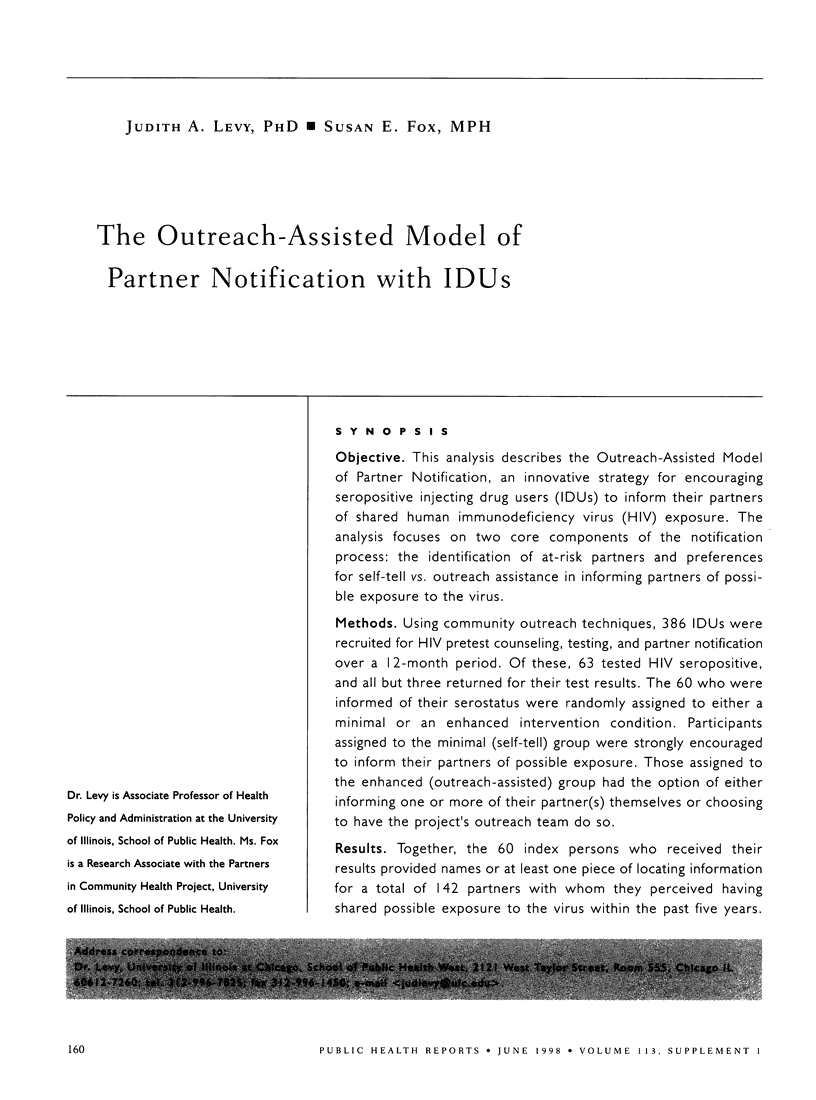
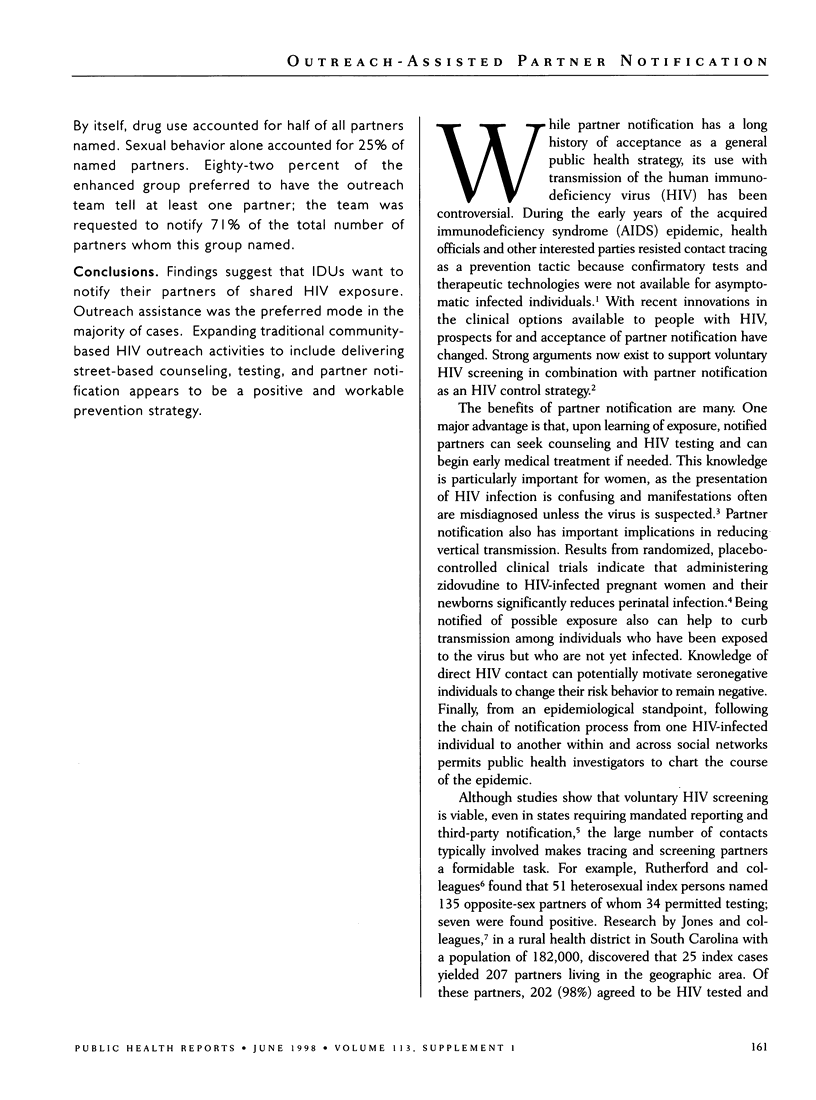
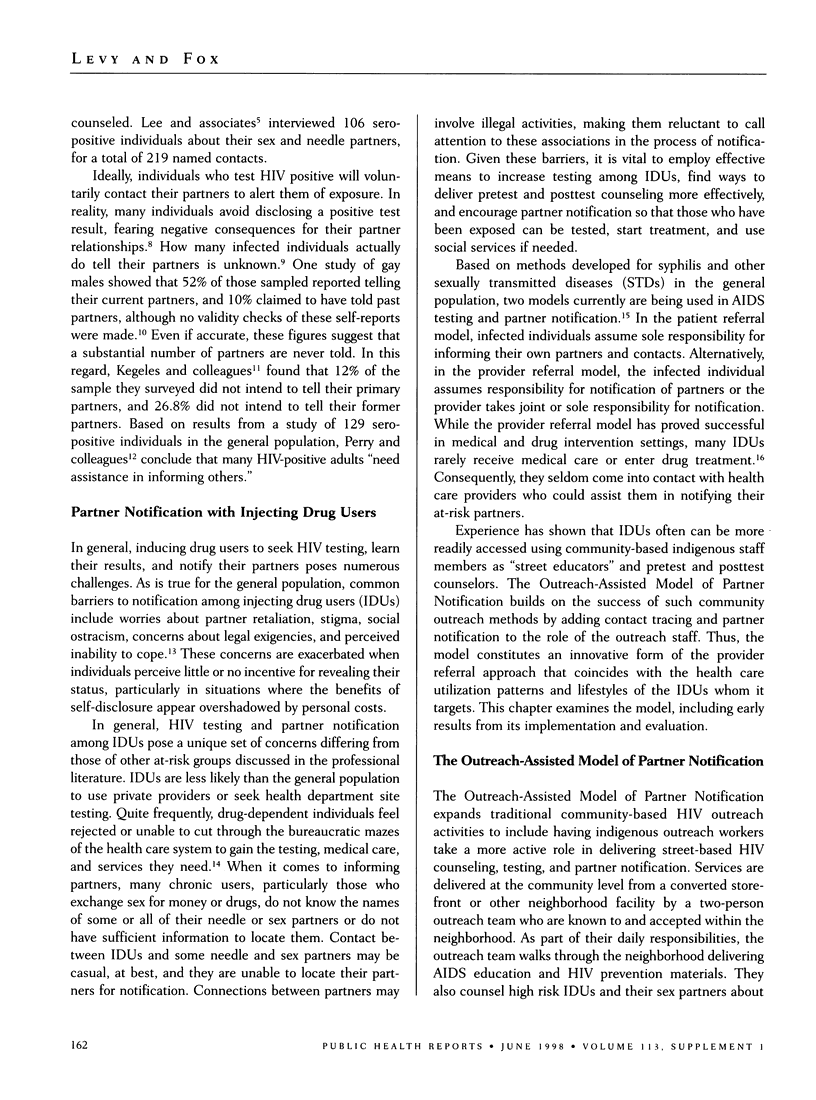
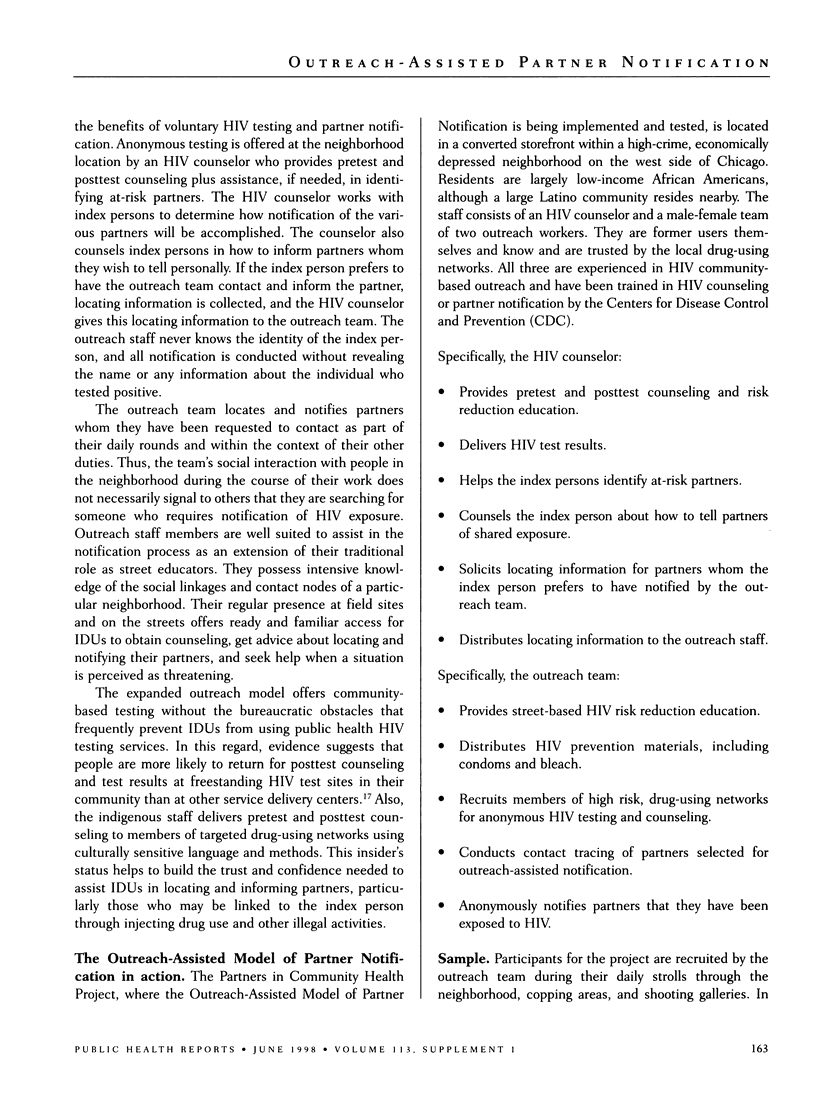

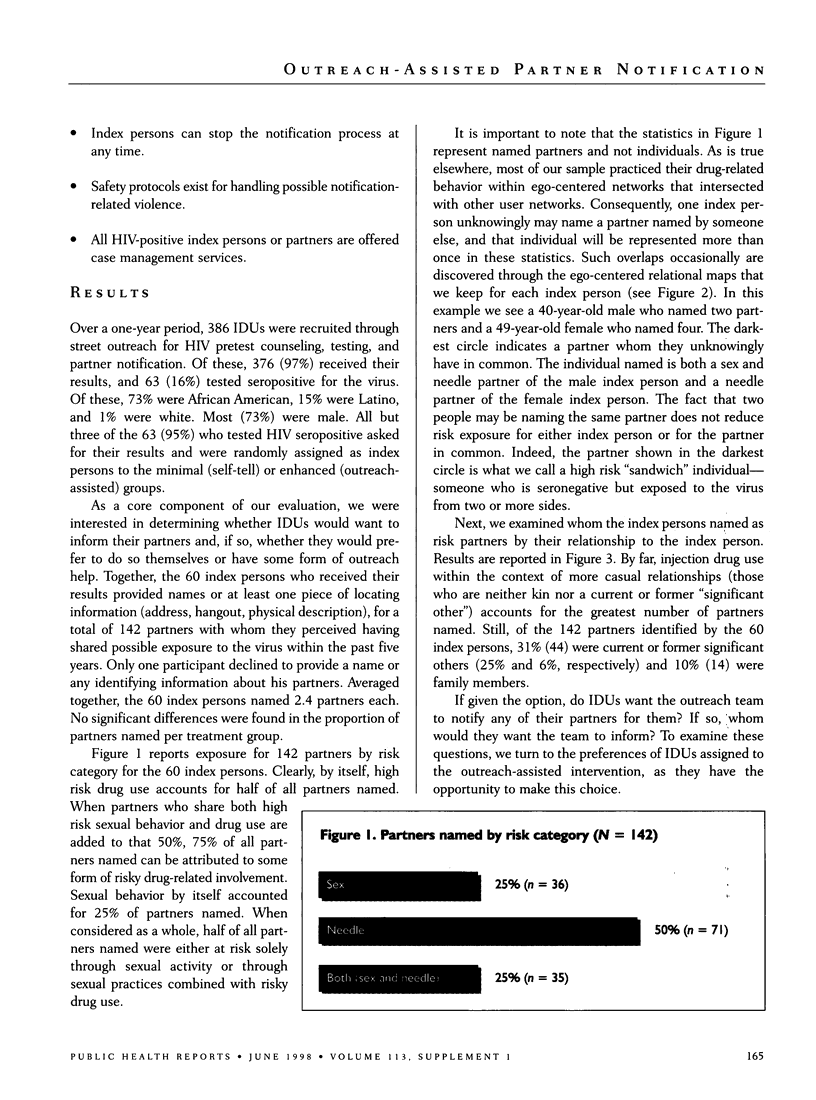
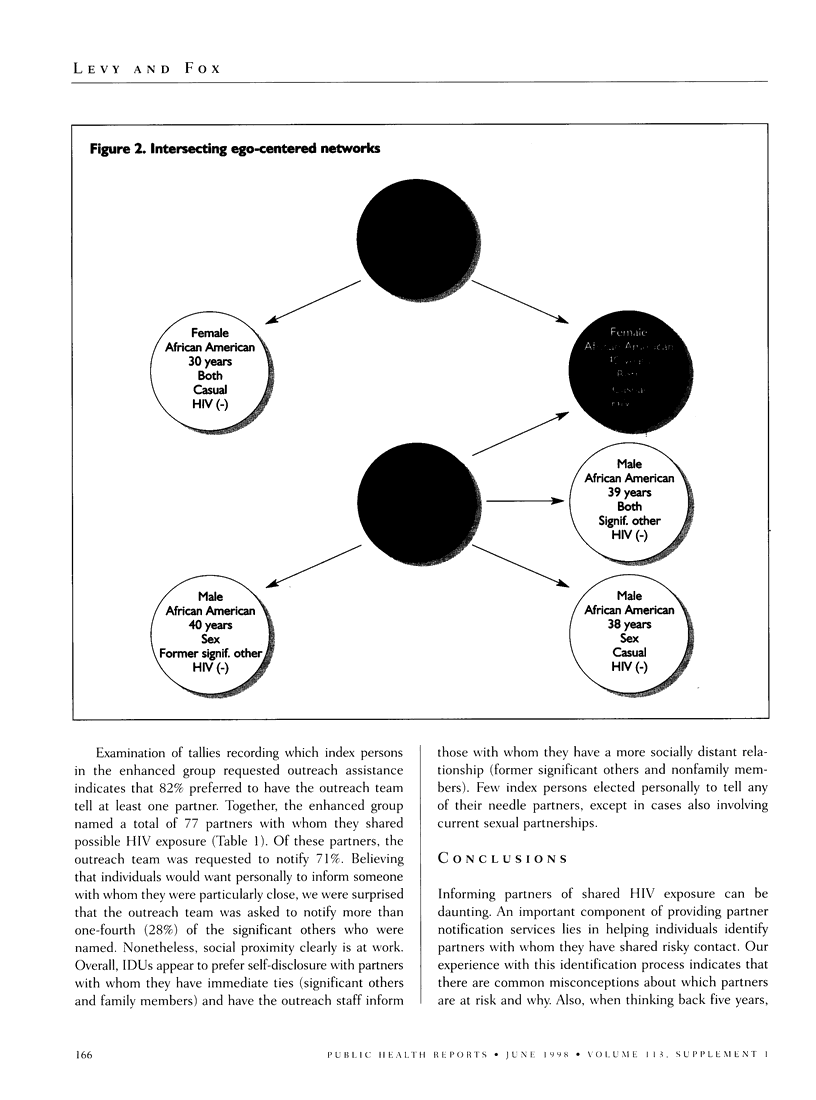
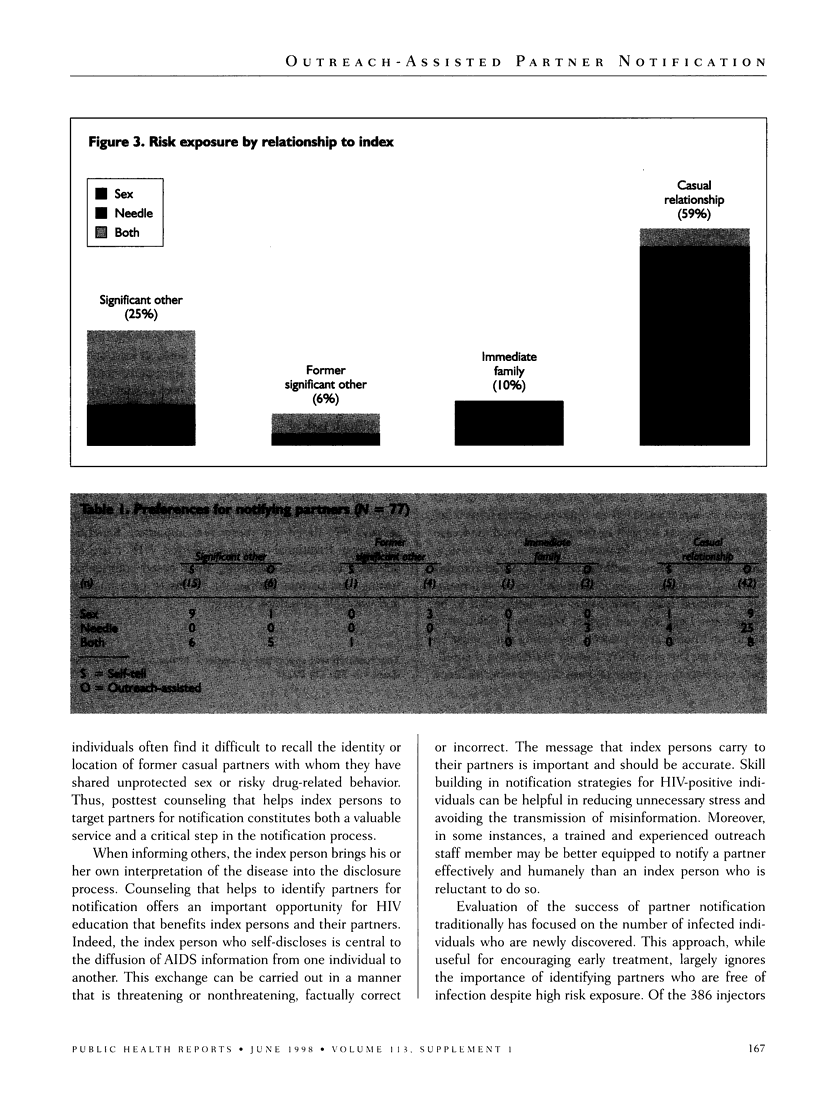
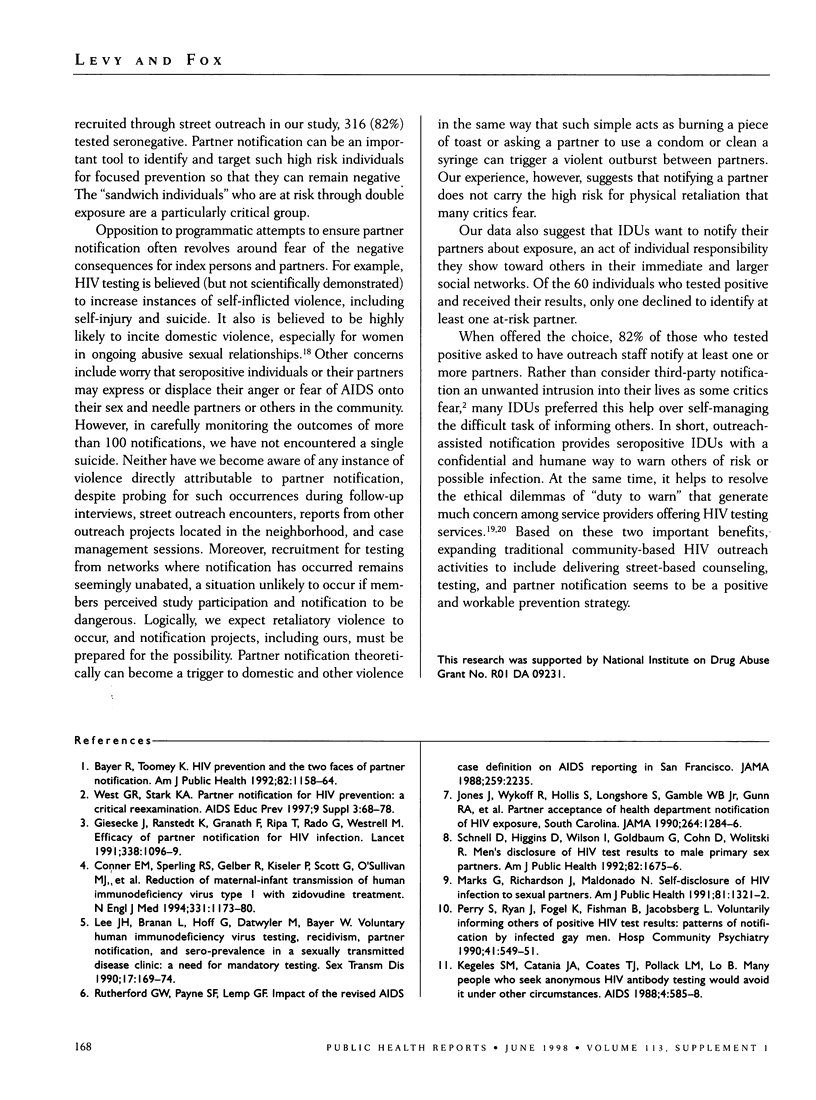
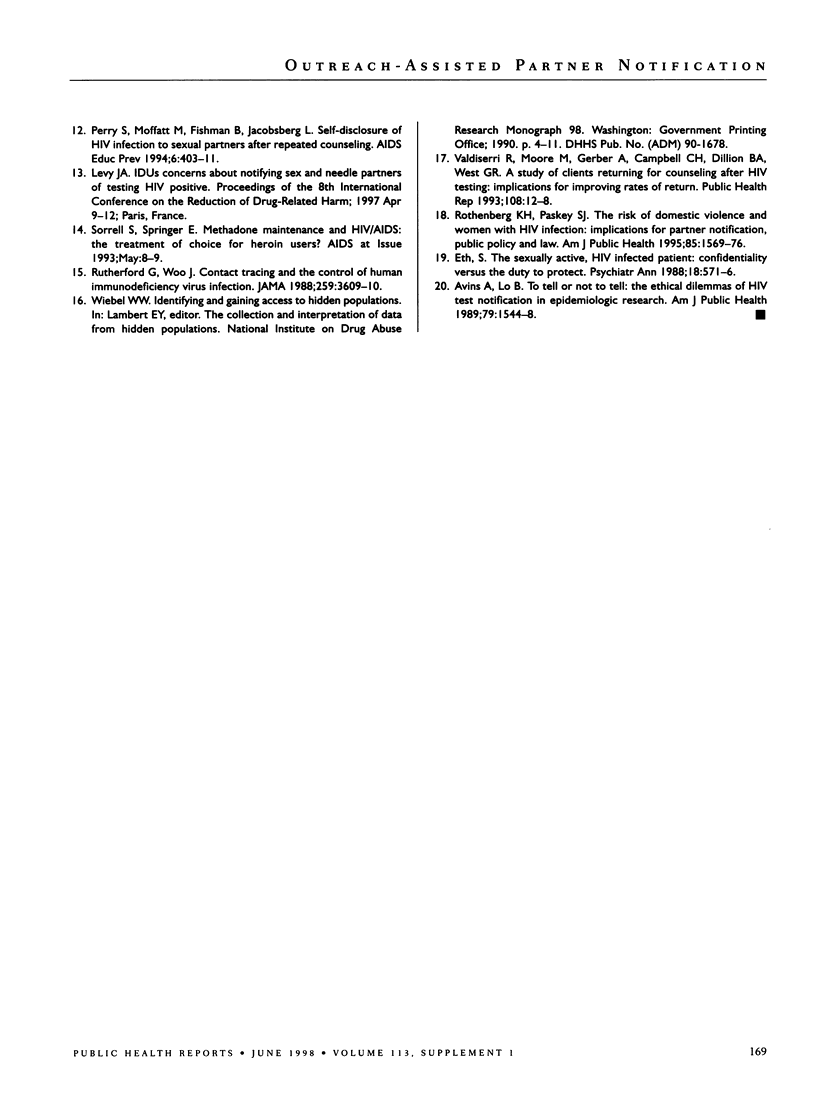
Selected References
These references are in PubMed. This may not be the complete list of references from this article.
- Avins A. L., Lo B. To tell or not to tell: the ethical dilemmas of HIV test notification in epidemiologic research. Am J Public Health. 1989 Nov;79(11):1544–1548. doi: 10.2105/ajph.79.11.1544. [DOI] [PMC free article] [PubMed] [Google Scholar]
- Bayer R., Toomey K. E. HIV prevention and the two faces of partner notification. Am J Public Health. 1992 Aug;82(8):1158–1164. doi: 10.2105/ajph.82.8.1158. [DOI] [PMC free article] [PubMed] [Google Scholar]
- Connor E. M., Sperling R. S., Gelber R., Kiselev P., Scott G., O'Sullivan M. J., VanDyke R., Bey M., Shearer W., Jacobson R. L. Reduction of maternal-infant transmission of human immunodeficiency virus type 1 with zidovudine treatment. Pediatric AIDS Clinical Trials Group Protocol 076 Study Group. N Engl J Med. 1994 Nov 3;331(18):1173–1180. doi: 10.1056/NEJM199411033311801. [DOI] [PubMed] [Google Scholar]
- Eth Spencer. The sexually active, HIV infected patient: confidentiality versus the duty to protect. Psychiatr Ann. 1988 Oct;18(10):571–576. [PubMed] [Google Scholar]
- Giesecke J., Ramstedt K., Granath F., Ripa T., Rådö G., Westrell M. Efficacy of partner notification for HIV infection. Lancet. 1991 Nov 2;338(8775):1096–1100. doi: 10.1016/0140-6736(91)91962-t. [DOI] [PubMed] [Google Scholar]
- Jones J. L., Wykoff R. F., Hollis S. L., Longshore S. T., Gamble W. B., Jr, Gunn R. A. Partner acceptance of health department notification of HIV exposure, South Carolina. JAMA. 1990 Sep 12;264(10):1284–1286. [PubMed] [Google Scholar]
- Kegeles S. M., Catania J. A., Coates T. J., Pollack L. M., Lo B. Many people who seek anonymous HIV-antibody testing would avoid it under other circumstances. AIDS. 1990 Jun;4(6):585–588. doi: 10.1097/00002030-199006000-00016. [DOI] [PubMed] [Google Scholar]
- Lee J. H., Branan L., Hoff G. L., Datwyler M. L., Bayer W. L. Voluntary human immunodeficiency virus testing, recidivism, partner notification, and sero-prevalence in a sexually transmitted disease clinic: a need for mandatory testing. Sex Transm Dis. 1990 Oct-Dec;17(4):169–174. doi: 10.1097/00007435-199010000-00004. [DOI] [PubMed] [Google Scholar]
- Marks G., Richardson J. L., Maldonado N. Self-disclosure of HIV infection to sexual partners. Am J Public Health. 1991 Oct;81(10):1321–1322. doi: 10.2105/ajph.81.10.1321. [DOI] [PMC free article] [PubMed] [Google Scholar]
- Perry S. W., Card C. A., Moffatt M., Jr, Ashman T., Fishman B., Jacobsberg L. B. Self-disclosure of HIV infection to sexual partners after repeated counseling. AIDS Educ Prev. 1994 Oct;6(5):403–411. [PubMed] [Google Scholar]
- Perry S., Ryan J., Fogel K., Fishman B., Jacobsberg L. Voluntarily informing others of positive HIV test results: patterns of notification by infected gay men. Hosp Community Psychiatry. 1990 May;41(5):549–551. doi: 10.1176/ps.41.5.549. [DOI] [PubMed] [Google Scholar]
- Rothenberg K. H., Paskey S. J. The risk of domestic violence and women with HIV infection: implications for partner notification, public policy, and the law. Am J Public Health. 1995 Nov;85(11):1569–1576. doi: 10.2105/ajph.85.11.1569. [DOI] [PMC free article] [PubMed] [Google Scholar]
- Rutherford G. W., Payne S. F., Lemp G. F. Impact of the revised AIDS case definition on AIDS reporting in San Francisco. JAMA. 1988 Apr 15;259(15):2235–2235. [PubMed] [Google Scholar]
- Rutherford G. W., Woo J. M. Contact tracing and the control of human immunodeficiency virus infection. JAMA. 1988 Jun 24;259(24):3609–3610. [PubMed] [Google Scholar]
- Schnell D. J., Higgins D. L., Wilson R. M., Goldbaum G., Cohn D. L., Wolitski R. J. Men's disclosure of HIV test results to male primary sex partners. Am J Public Health. 1992 Dec;82(12):1675–1676. doi: 10.2105/ajph.82.12.1675. [DOI] [PMC free article] [PubMed] [Google Scholar]
- Valdiserri R. O., Moore M., Gerber A. R., Campbell C. H., Jr, Dillon B. A., West G. R. A study of clients returning for counseling after HIV testing: implications for improving rates of return. Public Health Rep. 1993 Jan-Feb;108(1):12–18. [PMC free article] [PubMed] [Google Scholar]
- West G. R., Stark K. A. Partner notification for HIV prevention: a critical reexamination. AIDS Educ Prev. 1997 Jun;9(3 Suppl):68–78. [PubMed] [Google Scholar]


